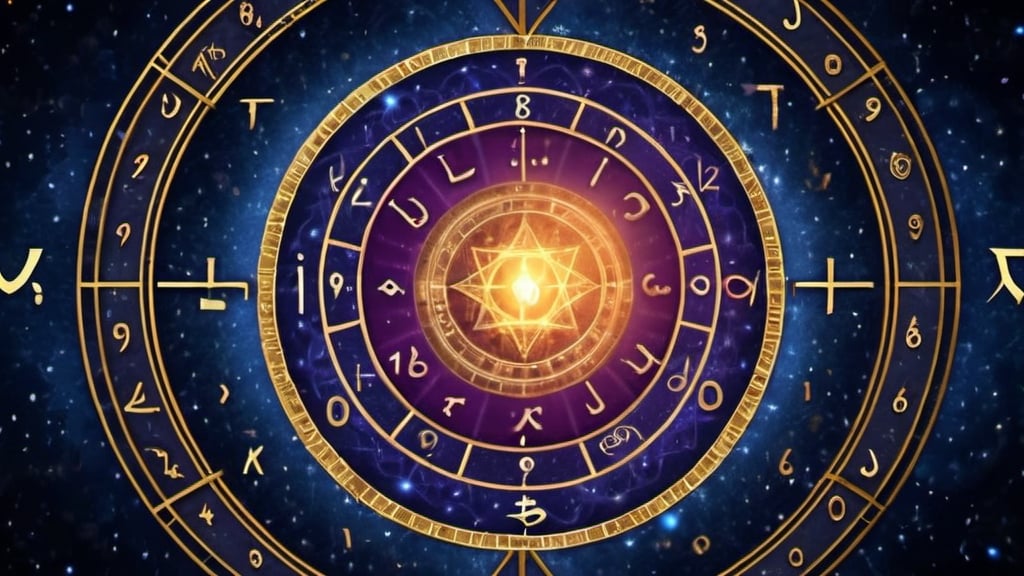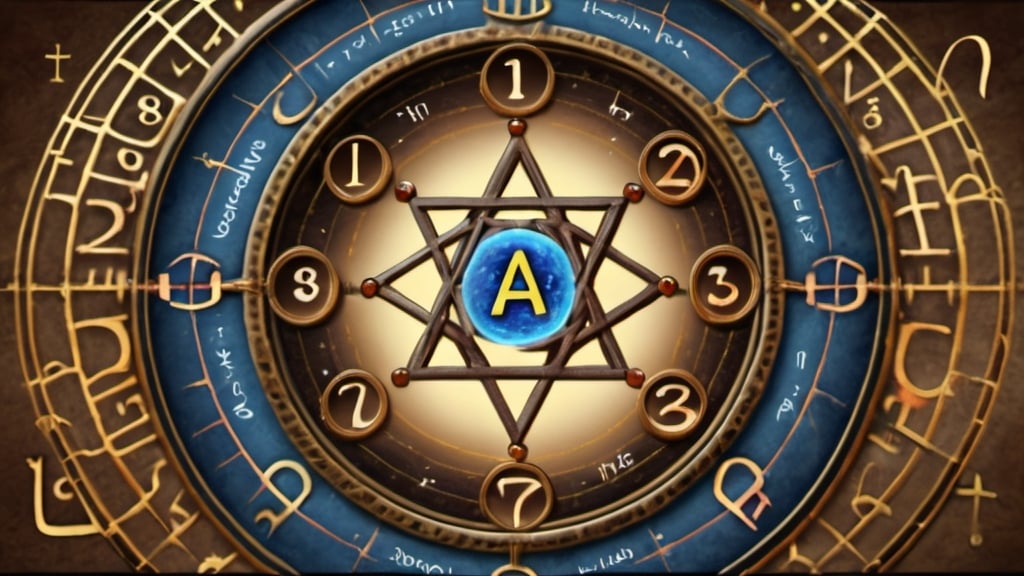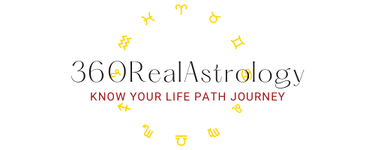What Can Kabbalah Numerology Reveal About Your Future?

1. Introduction
The first time I used Kabbalah numerology to help me out with a situation, I was pacing back and forth in my apartment, facing a specific issue. I had left something in my past and was hoping to move on. I had the feeling that the thing that I had left was words of ill-taste toward someone, and this was confirmed when I calculated the phrase number. (I will eventually get into all these Kabbalah terms and numerology of course.) I calculated when would be the best time for me to ask for forgiveness, and when the best time would be for us to meet and talk. Sure enough, everything went accordingly to plan, fitting in perfectly with the advice that the numerology has given me. Since then, many other successful incidents using Kabbalah numerology have surfaced.
I am aware that this story may seem a bit far-fetched for those who are unfamiliar with Kabbalah and its teachings. Many people believe that Kabbalistic traditions are nothing more than mystical myths with no solid basis. In actuality, Kabbalah is a systematic, organized science, though an esoteric one. Just as well there are people who use numerology in an attempt to unveil the hidden truths of the universe. Yet, Kabbalah and numerology together form a rewarding system of understanding that can be learned rather quickly.
It’s my intent to shed a bit of light on Kabbalah and the Tree of Life, specifically as a map for the initiation of God’s energy into creation, and how numerology is used as a sort of discerning tool to understand the hidden purpose of things. From here I will go into the specifics of Kabbalistic numerology. This essay will be quite detailed, with the intention of guiding the reader to a higher understanding of Kabbalah and the constructive use of its teachings, hopefully leading the reader to integrate these teachings into his/her own life. And so, I will start with one of the most fundamental tools of Kabbalistic numerology, Gematria.
2. Understanding Kabbalah Numerology
Kabbalistic numerology uses the ancient Hebrew alphabet to uncover deeper meanings within the Word of God – both the Bible and the ancient spiritual text of the Torah. The Hebrew alphabet is a simple to learn language, making it an accessible device to all number students. Because the Hebrew language is a sound and symbol oriented language, the characters of the Hebrew alphabet correspond to numbers in accordance to their sound. This is where the use of numerology began in Judaism.
The origins of Kabbalistic numerology stems from the time the Hebrews left Egypt more than a thousand years before Pythagoras was born. It was at this time that the Hebrews were exposed to the Chaldean and Babylonian societies. The Jewish adopted a lot of the ideologies from these new communities while they wandered across the globe. One such ideology was the use of numerology to attach deeper meanings to words and concepts.
This is best uncovered in the Kabbalistic text, Sefer Yetzirah. The analogue between the diverse beliefs can be seen with the Hebrew adopting the 10 (in all of its existence) as an essential part to the technique of numerology. This would be best compared to the Pythagorean belief that all things are numbers – which is to say all things can be defined in mathematical constructs.
2.1. Definition and Origins
While kabbalistic teachings are hard to understand, kabbalistic numerology is considered to be even more difficult. Kabbalistic numerology is often a stock motion when people refer to Kabbalah, and while not a major teaching in the kabbalistic system, it is often a misinterpreted one. Kabbalistic numerology teaches the emanations by numbers, latently teaching everything in existence by a numerological value. Understanding the teachings of kabbalistic numerology is an extremely complex system, that is best embodied by those who already possess a suitable understanding of the kabbalistic system in general.
Though it was first practiced by Jewish Rabbis, it is a non-discriminatory practice and theory, and it is not limited to people of any one religion. It is a universal system for which any person is invited to study and try to understand. Kabbalah offers teachings of the natural and supernatural world, teaching the purpose of existence and the design of the universe. Kabbalah provides a detailed understanding of the human being; the body and soul, and teaches how to understand and relate to the infinite. Kabbalah is composed of a not easily understood dual layered system of the Tree of life and the Tree of Death. It teaches the Sephiroth on the tree of life, which outlines the emanations of God as 10 points or spheres. While this is a very basic look at Kabbalah, it offers an understanding as to how kabbalistic numerology fits into the kabbalistic teachings.
Kabbalah (Hebrew קַבָּלָה “reception”, קַבָּלָה, usually spelled “Kabbalah” in English) is a discipline and school of thought concerned with the esoteric aspect of Rabbinic Judaism. It was systematized in 12th-13th century Judaism, and kabbalistic knowledge is contained in the Zohar. It was later re-interpreted and expanded upon by medieval and modern kabbalists. The word “kabbalah” means “to receive” and is believed to be referring to the reception of the oral Torah.
2.2. Basic Principles
Understanding Kabbalah Numerology
Basic Principles
Coming from the Hebrew word Kabbalah, which means “to accept,” it is often referred to as the “receiving.” This implies that the knowledge of Kabbalah had always existed but is now being revealed to the world.
Kabbalah numerology is based on the ancient tradition of the Hebrew mystics, and part of the Tree of Life is derived from this. There are five different worlds in which the Tree of Life represents or governs different aspects of the universe and a person’s life. These worlds are the world of emanation, the world of creation, the world of formation, the world of action, and the world of the material earth.
The most important aspect of Kabbalah is the understanding of the one. This means that every aspect of life, from the simplest everyday event to the grandest goal, is a manifestation of the one single source of life. This is often represented by the idea of the creator and the creation, which is the basis of most dualities. The modern interpretation of the one can be seen as the unity of all things, and this is the underlying philosophy behind Kabbalistic numerology. Whether it is the individual sparks of the different sephiroth or individual permutations of the different names of God, everything can be broken down to a simpler unified source.
This is done through understanding the relationships between different aspects of life, the universe, or anything the mystic seeks to study and applying the concept of correspondence. This is the knowledge that everything is a copy of or is derived from another thing, and knowing this allows a person to change or understand any aspect of the universe.
2.3. Numerological Meanings
The meanings attributed to the numbers one to nine correspond to the idea of development. For example, the number one has the meaning of wholeness and leadership, while the number two is to do with division and dependency. Each meaning has positive and negative aspects, and to comprehend the particular meaning of a number in relation to anything is a complex task, best interpreted by a numerologist. Other more complex systems using numbers are the Hebrew Gematria and the New Kabbalah, both of which assign a set of number values to the letters of an alphabet. These systems offer a more complex insight into the meaning of a word, allowing one to apply numerological principles to the interpretation of the word itself.
Numerological interpretation is not confined merely to quantity vibrations of numbers, summed up as meanings. The numbers one to nine are the basis of numerology. Anything, whether animate or inanimate, known or unknown, large or small, can be broken down to its basic numerical value. In accordance with the theory of the microcosm and the macrocosm, these numbers can now be applied to things, as the numbers symbolize the originating force of the thing itself. Graphs can be made to show how numbers are in constant motion, allowing the viewer to better understand the information being conveyed.
Guideline 1: The text should have a formal tone.
3. Applying Kabbalah Numerology to Predict the Future
Numerology is a study that has been used for thousands of years to reveal an understanding of one’s character and destiny. In its most basic form, it is a study of numbers, applying meaning to numbers and their combinations to better understand the world around us. Kabbalistic numerology (also known as Gematria and Temurah) is a complex system based on the Hebrew alphabet. It ventures profoundly into the understanding of the laws and the process of the creation of the universe.
This is a great tool for a numerologist to understand and to work with that through which he has been created. Because Kabbalah is an esoteric and mystical study, it’s difficult for a novice to grasp complete understanding of the Kabbalah. In this case, 99% perspiration is not effective without 1% inspiration. But, for those who are looking to understand the basic inner workings of the Kabbalistic system without being overwhelmed by the intricacies, a general understanding can still be achieved.
3.1. Calculation Methods
In the early 20th century, the system of Gematria calculations was largely reduced by Leo Da Vinci to the “English Gematria” method, using the values 1-9 to the letters A-I, J-R, S-Z. Nonetheless, Kabbalists who come from Rabbinical and/or Hebrew heritage have maintained the older methods due to their effectiveness.
The second method of Gematria is Temurah, and is a way of hiding sensitive information from the uninitiated, by interchanging letters according to a set system, either with the encryption of a single letter, or a series of letters or words. This method is largely obsolete compared to the Gematria Mispar Gadol, as it is much more complicated on larger words and requires multiple calculations/reversals to decode a value and apply it to a word, with varying results.
Gematria is a very extensive system of study, and equations are usually left to the analyst’s discretion in terms of how far an analysis must go.
Gematria is also used in finding the correspondences between a person’s name and another significant word. With Gematria Mispar Gadol, it is generally more effective to use the ordinary values as the results show added significance in certain patterns or associations of words. An example could be, “high values refer to spirituality,” or “the number 30 is always a negative connotation.”
Another method of Gematria, and one of the most commonly used, is to find a word that – in regular or ordinal form – equals the same value of another word that shows a similarity to this word. An example of this would be using the regular value, the word HLBVN (Hod, Lev, Binah, Netzah) for חלבן, meaning “rubbed”, as it equals 68, the same value of חי- meaning “alive”.
Gematria is a system of assigning numerical value to a word or phrase, and then seeking other words or phrases with the same value. When using this method, there are several variants to the calculation, such as reducing the value of all letters to a single digit, adding the results of a series of words or phrases together to produce a single value.
Calculations can be made using a few methods. The modern method has been largely simplified from the original methods taught by Rabbi Akhlah. At the time Rabbi Akhlah was teaching, many students were renowned in Torah and Talmudic study. But in order to prevent confusion to those without such a high level of knowledge, the rabbi provided a simpler method for them to understand. This was known as Gematria Mispar Gadol.
3.2. Interpreting Numerological Patterns
The same can be done with a date on the calendar. We can now assign another number to each section of a date and compare it to forecast an event.
Success and failure can mean many things. Depending on the characteristics of the numbers involved, it could indicate marriage, childbirth, job promotion, migration, health, etc. By using this method, various life events in the future of the person can be predicted by the relative successes or failures between the different sections.
Now, if we can break the name down into sections (e.g. first name, middle name, last name, name with nickname) and consider each section as a separate entity, we can use the calculation method to compute positive and negative integers for each section. This can then be used to forecast the relative success or failure in comparison to other sections.
If we consider the life of a person, the characteristics of their name reveal the various positive and negative qualities of the person. Positive qualities will bring success and fulfillment, while negative qualities will bring failure and disappointment.
Next, we can consider the numerical pattern. This is where future prediction comes in. We have seen that every Hebrew letter and number has a particular characteristic, and it is this characteristic which reveals what will happen in the future.
3.3. Predictive Techniques
If one accepts the premise that human behavior and future events cannot be fully explained by or predicted from observable cause and effect, it is often uncomfortable to live with the uncertainty and ambiguity. Anxiety may result from the feeling of a lack of control over what is happening. Kabbalists maintain that people can examine patterns of the past and present and determine the most probable result of a given action or attribute. This utilizing of probabilistic thinking is what modern science refers to as statistical inference. Kabbalistic techniques for prediction do not constitute a comprehensive deterministic system, yet rather a method for determining probable outcomes under assumed conditions.
Some unique and innovative approaches to divinatory techniques have been developed within the field of Kabbalah, such as permutation of divine names or letter sequences in order to discern the inner attributes of a person or event. While a full explanation of these techniques is beyond the scope of this paper, the interested reader can see an example of how various letter permutations are applied to calculating the probability of an event. An introduction to the calculation of odds or probability using contemporary statistics can be found.
3.4. Limitations and Considerations
Modern Hebrew Gematria yields a range of interpretations for many words, possibly imparting different future results from the same information. Saying that it is usually difficult to apply only one meaning of a word to a given situation since that essentially freezes that word at that time as having the same meaning in a different context. When a future event is spelled out, applying it to a different set of words can be unprotected terrain, and the interpretation could differ radically. Interpretation and re-interpretation is a constant problem. This is a problem for any method of divination, nothing is beyond the limits of interpretation, but this is particularly an issue as numerology revolves around meanings of words.
Building upon these difficulties, numerological patterns are really patterns depending on how and where the numbers occur. If the method of calculating the word-number has variation, the numerological pattern may lose consistency and therefore an accurate interpretation. This isn’t only a matter of calculation method, but also about the rhythm of numerological value in proportion to other numbers. If a pattern becomes a pattern of missing numbers or only occurrences of numbers at certain intervals, the same is the pattern itself will significantly change its meaning. This doesn’t always ruin the number to word link, however, it means the patterns between two sets of words with the same total may differ, considerably confusing predictive techniques.

4. Exploring the Potential Future Insights
One can make a similar type of analysis for career and finances relatively easily, since these are highly defined areas with tangible goals and objectives. By understanding what number vibrations a particular job or home has, one can go on to make an accurate analysis of the compatibility between that job and his individual number. Similarly, one can map the energies created between himself and any other person involved in a particular financial matter and make predictions on the outcome of those matters based on the number field. By knowing the strengths and weaknesses of any particular situation, one can be best prepared to maximize the positive outcomes and mitigate the negative outcomes.
Given that an individual is largely defined by his relationships with others and his environment, it is very useful to know what types of events are likely to occur in these areas. Numerology is particularly useful for relationships due to the extremely complex ways people interrelate with one another. For each person you interact with, a new number field is created reflecting the energies of both of you at that moment in time. These number fields can be mapped and compared to see what types of energies are created when two people interact, and thus make predictions on what types of interactions are most likely to occur in the future. This method can be applied to personal relationships and also professional relationships and one’s interactions with his environment. By systematically comparing the changes in number fields, one can gain a vast understanding of the expected changes in his various relationships.
It is said that every event is a reflection of the numerical energies thriving at that moment of time. If this is the case, then it is logical to progress upon this theory and see what types of events are most likely to occur in the future. By understanding the types of events that are most likely to occur in the future, one can be best prepared for those events.
4.1. Personal Relationships
Due to the availability of relationship compatibility tests online, the kabbalistic numerology system that is the basis for the “What Can Kabbalah Numerology Reveal About Your Future?” book can easily be applied to relationships. Indeed, relationship compatibility is founded on the idea of reducing the self and potential future people to a numerical value, then comparing these values to each other. Given the nature of the Kabbalah and the numerology system, the working is quite similar to a simple comparison of Life Path numbers. However, for the purpose of deriving a future potential for a relationship, the two individuals’ life paths are added in a completely separate calculation to determine the future influence of one number on the other. This is found by working out which person is in a positive cycle in relation to their life path number. The final compatibility value for the two people is a comparison of the final numbers attained for the future influence calculations. For a relationship to have potential, it is suggested that the compatibility value be at least 111 (or 6 if the simple substitution method is used), which means at least compared to the average 100, it is a pass grade.
4.2. Career and Finances
And of course, wherever there is employment, there will also be financial matters. Money is a necessary commodity for survival in the modern world, and therefore it is important to manage it wisely. Rich or poor, man acts in the pursuit of more money in hopes that it will bring comfort and security. Unfortunately, many people are misguided to jobs and vocations that are not in line with who they are as a person and therefore do not bring satisfaction. This can also be revealed in the personal numerology year. Finally, there are those who find themselves with more money than they know what to do with, as it sits in the bank. Understanding numerology can help one at any financial level to attain a greater understanding of themselves in regards to how they should be earning and spending their finances.
As it concerns career, people generally like to seek advice during a transition period. It may be while they are in or out of a relationship. Perhaps you are unhappy in your present job and are considering a change. Maybe you are uncertain whether to leave your current job in pursuit of self-employment. Or perhaps you have a few vocational options in mind and need some direction. Whatever the situation, numerology can provide some valuable insight. It can shine light on the dynamics of your current job and the probable outcome.
It can help you understand your motivations when seeking employment and the talents and skills you bring to the table. It can help you understand the reasons behind your unhappiness in a current job and what you can do to change it. It can steer you in the direction of work that is more fulfilling and in line with who you are as a person. It can help you decide between vocational options and guide you towards the one that holds the most success. And lastly, it can reveal your ultimate career goal and the pathway to get there. All this information is drawn from the understanding of your life path, found in your date of birth.
4.3. Health and Well-being
It could be suggested that if a particular cause or ailment can be related to a certain negative behavior, the consequences of the act can be predicted based on the effect of the ailment. It’s explained as sin and retribution. This can lead the method to derive any necessary action or correction needed to add quality to life, avoid the same mistake, or prevent the cause recurring in a similar manner. The final result is simply prevention or the best possible outcome given the situation.
Health can be specifically looked at and is known as ‘Segula’. There are 13 methods developed to derive the meaning and interpretation of the representation of Kabbalah in relation to health and the state of the body and soul in terms of current or future ailment. This is an intricate method which involves converting the specific ailment into a numerical value and compressing it until it’s in the range of seven. There are many permutation and combination rules to compare the numbers, and the method ends when a word in the Torah is found.
The Kabbalah numerology pertains to a deeper and more detailed examination of the writing of the Torah as well as other sacred writings, which in turn can predict any possible future event or possible outcomes. This can help in clarifying decision-making processes to guide someone to the best choice based on the outcome.
4.4. Life Path and Purpose
What am I meant to learn in this life? What is it that the Creator wants from me? These are perhaps the most common questions that a person wonders throughout his or her lifetime. The first step in determining one’s purpose is to calculate the Life Path number. The Life Path number describes the nature of this journey through life. It indicates the challenges and abilities that are with you from birth to death. The Life Path is constructed from the sum of the birth date. This number represents who you are at birth and the native traits that you will always have. The Life Path number is calculated by simply reducing the day, month, and year to a single digit. For example, if you were born on October 13, 1964, the Life Path number is 5.
You have been chosen to learn the deepest secrets of Kabbalistic numerology. With this information, you will be able to know your life’s mission and how to achieve it. Knowledge is power. The teachings of the ancient Kabbalists will empower you to make your ideal future a reality. Simply knowing about the challenges that lie ahead will give you strength and confidence to overcome them. There is no end to the practical benefits of this information. In the end, you will possess a map showing the twists and turns of your personal path to spiritual growth.
References:
Avery, K. Q. “The Numbers of Life: The Hidden Power in Numerology.” 2022. [HTML]
Winter, Alix S., et al. “The Role of Multiple Birth and Birth Complications in the Association Between Assisted Reproductive Technology Conception and Autism Diagnosis.” American Journal of Epidemiology (2024): kwae049. oup.com
Pagalan, Lief, et al. “The association between prenatal greenspace exposure and Autism spectrum disorder, and the potentially mediating role of air pollution reduction: A population-based birth cohort study.” Environment International 167 (2022): 107445. sciencedirect.com
Li, Luyao, et al. “Life cycle greenhouse gas emissions for last-mile parcel delivery by automated vehicles and robots.” Environmental science & technology 55.16 (2021): 11360-11367. umich.edu
Corley, Janie, et al. “Predictors of longitudinal cognitive ageing from age 70 to 82 including APOE e4 status, early-life and lifestyle factors: the Lothian Birth Cohort 1936.” Molecular Psychiatry 28.3 (2023): 1256-1271. nature.com
Nafilyan, Vahe, et al. “Occupation and COVID-19 mortality in England: a national linked data study of 14.3 million adults.” Occupational and Environmental Medicine 79.7 (2022): 433-441. bmj.com
Woodman, R. J. and Mangoni, A. A. “A comprehensive review of machine learning algorithms and their application in geriatric medicine: present and future.” Aging Clinical and Experimental Research, 2023. springer.com
Aluru, Narayana R., et al. “Fluids and electrolytes under confinement in single-digit nanopores.” Chemical reviews 123.6 (2023): 2737-2831. acs.org
Kazemi, Hamed, et al. “The integrated production-distribution scheduling in parallel machine environment by using improved genetic algorithms.” Journal of Industrial and Production Engineering 38.3 (2021): 157-170. researchgate.net
Radhakrishnan, Lakshmi, et al. “A certified de-identification system for all clinical text documents for information extraction at scale.” JAMIA open 6.3 (2023): ooad045. oup.com








Connect me